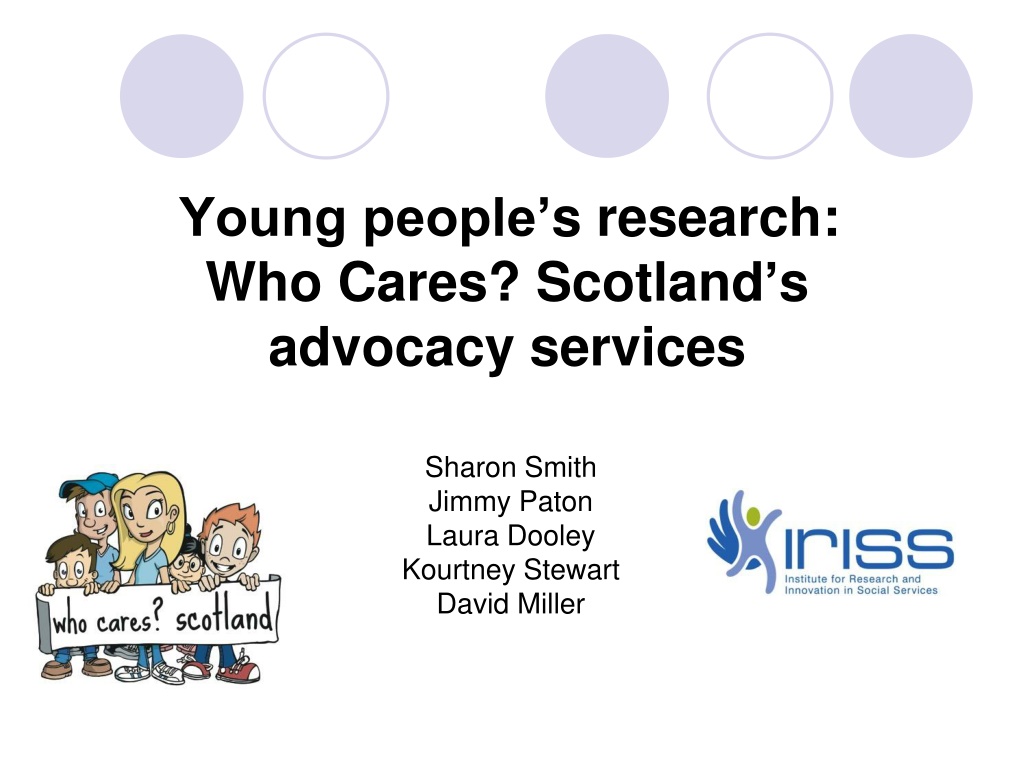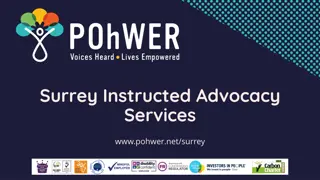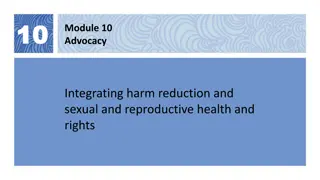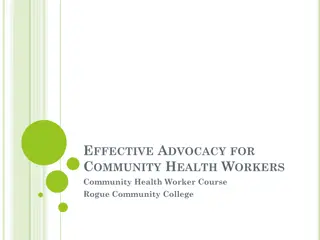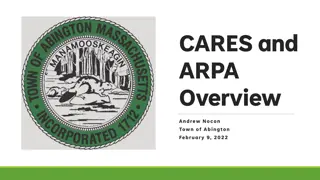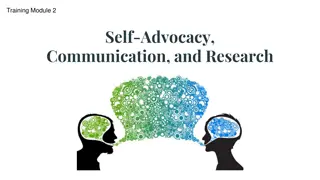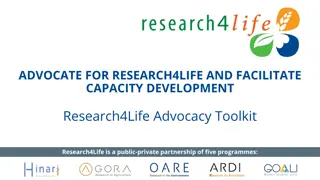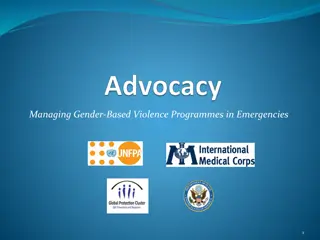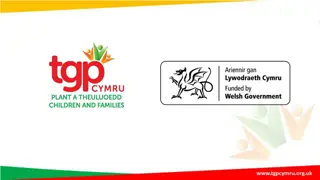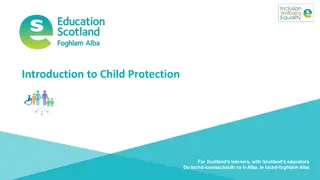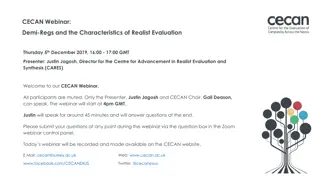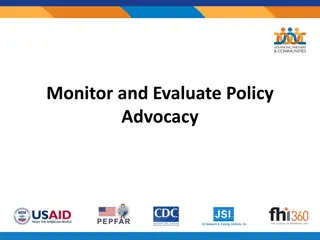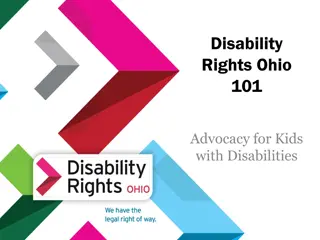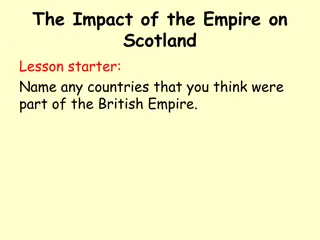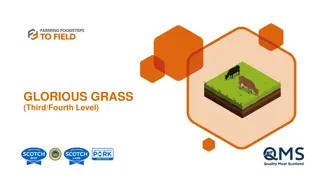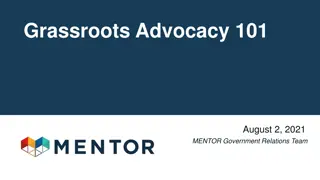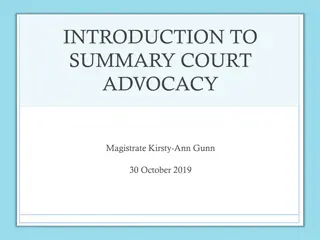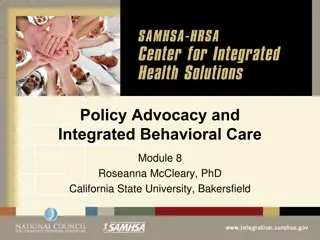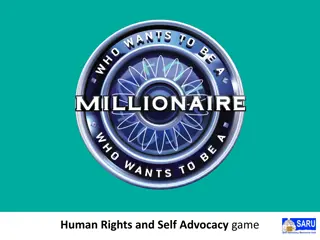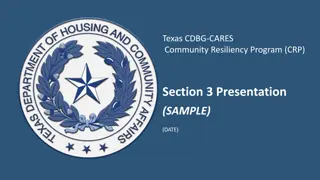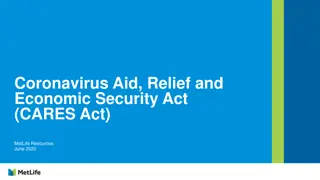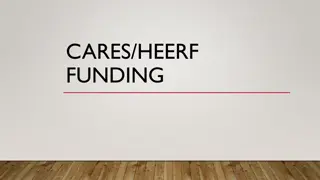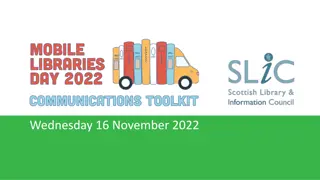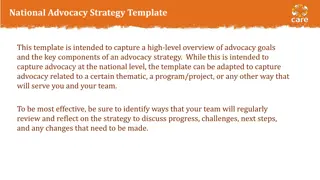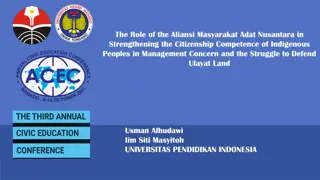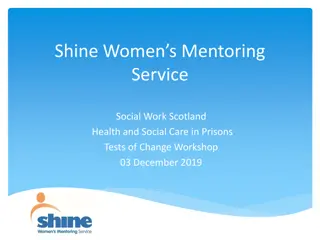Young People's Research: Who Cares? Scotland Advocacy Services Evaluation
Evaluate how Who Cares? Scotland supports young people through research conducted by individuals with firsthand experience. Methods included online and paper questionnaires, focus groups, and interviews. Findings highlighted aspects of knowledge, support, and voice within the advocacy service, with limitations identified.
Download Presentation

Please find below an Image/Link to download the presentation.
The content on the website is provided AS IS for your information and personal use only. It may not be sold, licensed, or shared on other websites without obtaining consent from the author. Download presentation by click this link. If you encounter any issues during the download, it is possible that the publisher has removed the file from their server.
E N D
Presentation Transcript
Young peoples research: Who Cares? Scotland s advocacy services Sharon Smith Jimmy Paton Laura Dooley Kourtney Stewart David Miller
Introduction We evaluated Who Cares? Scotland advocacy service on how they support young people We wanted to help Who Cares? improve the way they support young people. We got involved because we have all been in care and have previous experience with Who Cares? Scotland. We learned about doing research, decided on the research methods, carried out the research analysed the results.
What was the research about ? We decided to look at how Who Cares? was performing on 3 different outcomes: People know what Who Cares? is for Young people get support from Who Cares? when they need it Young people have a voice (because of Who Cares?) We decided that the 3 points above were most important because they would show that Who Cares? was providing a really good advocacy service.
How we did the research Online questionnaire with professionals (27 responses) Paper questionnaire with residential staff (28 responses) One focus group with young people in children s houses. 7 one to one interviews with young people in children s houses.
Why we chose these methods Surveys We wanted to get the views of a wide variety of adults Young people Focus groups to get lots of information One to one interviews to capture personal views and experiences
Limitations Lack of time Small numbers of people consulted Young people consulted were already involved with Who Cares? Scotland Young people in the focus group felt uncomfortable talking in front of their Who Cares? worker Young researchers all involved with Who Cares? bias?
Findings: Knowledge of Who Cares? All residential staff and 90% of professionals had heard of Who Cares? and could say what they did The majority were also very or quite confident that they could explain about Who Cares? to a young person However, young people were not always sure what Who Cares? did
Findings: Support from Who Cares? Both young people and adults consulted were mainly aware of the support that Who Cares? offers in meetings Young people thought that the support they received from Who Cares? was really good They felt that they had a good relationship with their Who Cares? worker
Findings: Support from Who Cares? Who Cares? workers helped young people with their confidence and self esteem and to get their point across The young people felt that they could trust their Who Cares? workers Young people also believed that Who Cares? generally made a difference to young people s lives
Findings: Getting in contact with Who Cares? Although the support from Who Cares? is seen as good, it can be really hard for young people to access the support. Lack of access to phones in children's houses or not having money to make phone calls When young people phone their Who Cares? worker they don t always answer or return calls quickly Other options for contact are limited, for example email or internet
Findings: Residential staff Residential staff were unsure of the difference made by Who Cares? Only 39% thought young people were happier and more confident most of the time after receiving support from Who Cares? Some staff thought that Who Cares? didn t give young people the answers they wanted to hear and were unlikely to provide a different point of view from the residential staff
Conclusions and recommendations Outcome 1: People know what Who Cares? is for Rating: Amber Build better relationships with residential staff and help them understand why you are important Show residential staff why you are important from a young person s point of view Expand your promotion so people are aware of your full range of services
Conclusions and recommendations Outcome 2: Young people get support from Who Cares? when they need it Rating: Amber Can you make a rule or policy that staff will reply in a few hours and tell the young people what they can expect Have another number or member of staff available as an alternative contact Consider a free phone number
Conclusions and recommendations Outcome 2: recommendations continued There is some interest in an out of hours service You could consider increasing internet contact like social networking or email Young people sometimes don t feel like there are enough staff for some areas, would it be possible to increase the numbers?
Conclusions and recommendations Outcome 3: Young people have a voice Rating: Green Keep your services active as they help young people feel confident and make a difference to their lives. You are really strong at helping young people speak up and giving practical support. Young people feel comfortable with their Who Cares? workers and really trust them.
